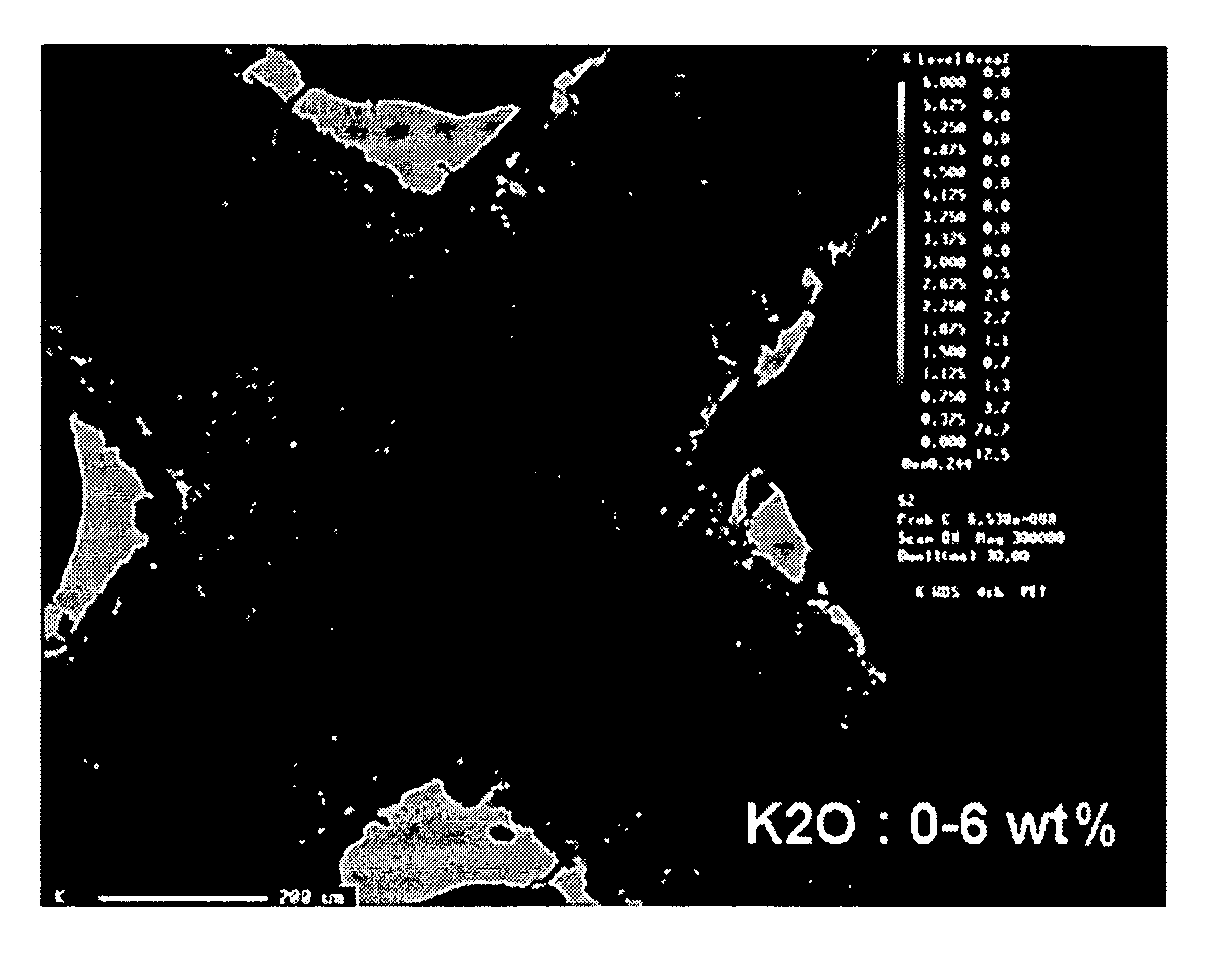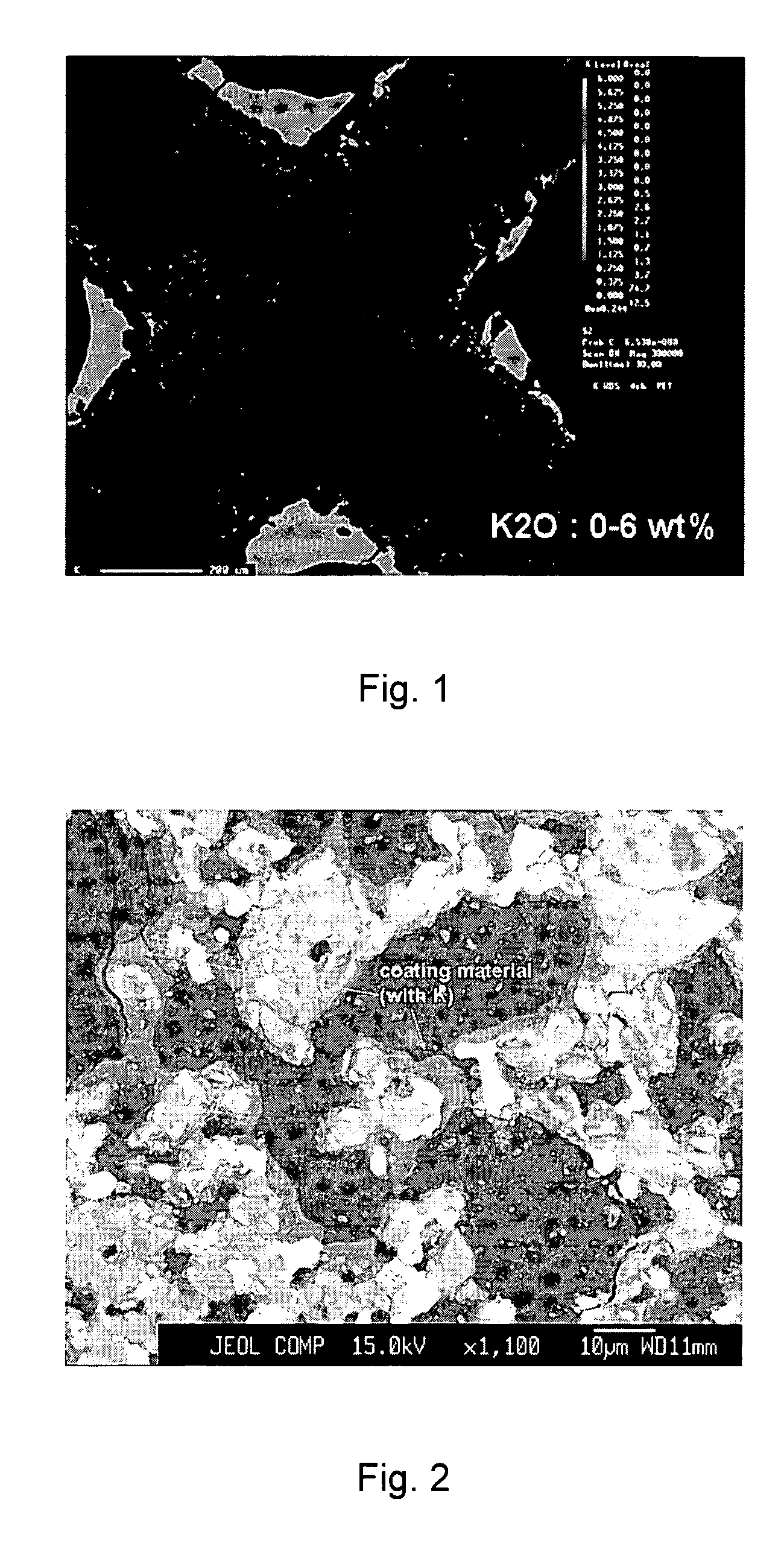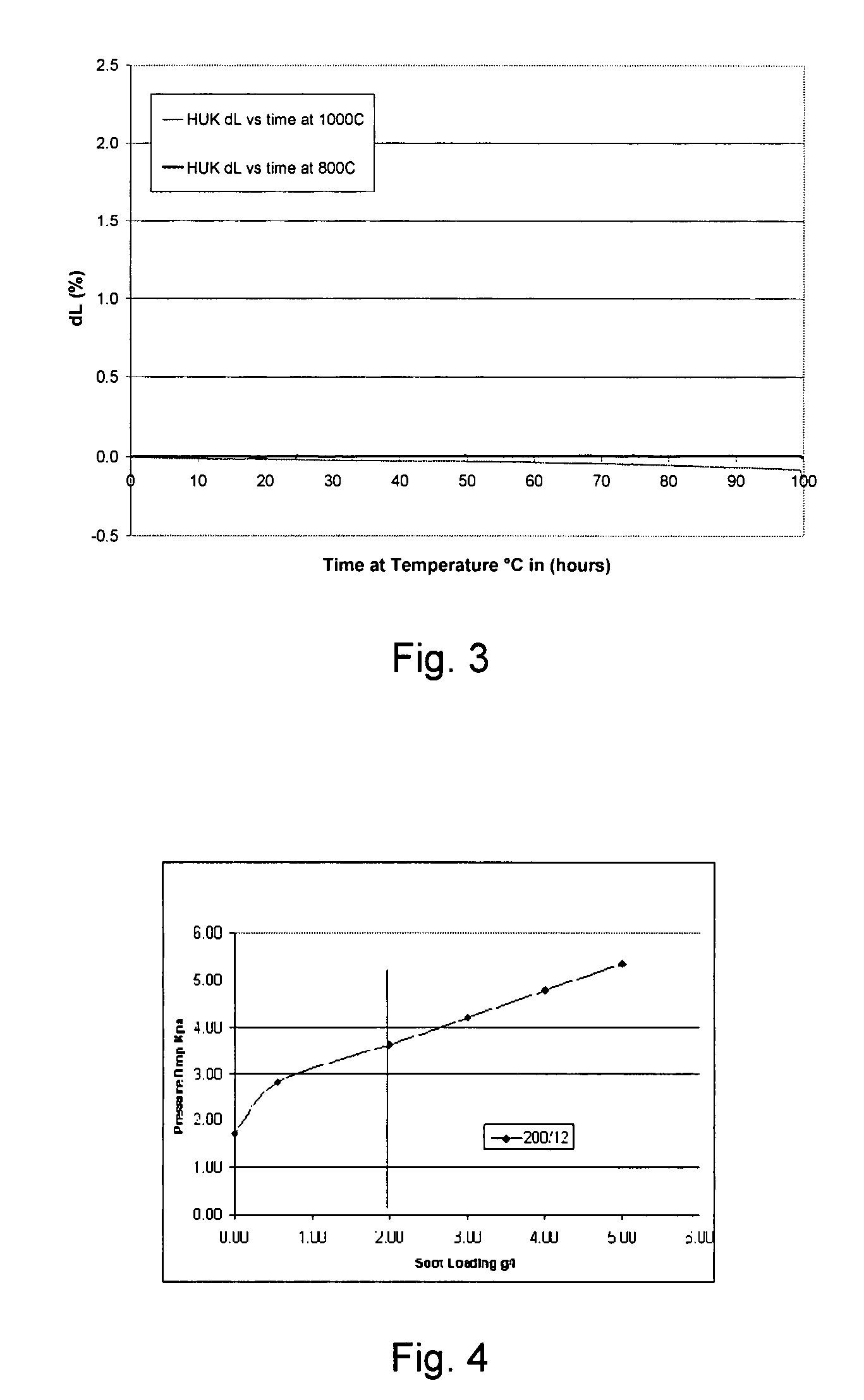Ceramic materials for 4-way and NOx adsorber and method for making same
a ceramic material and nox technology, applied in the field of ceramic materials, can solve the problems of incompatible cordierite with a potassium-based dpnr system, compromising the durability of cordierite filter substrate and nox absorption function of the potassium washcoat, and limiting its use, so as to achieve low coefficient of thermal expansion, high heat capacity, and durable ceramic body
- Summary
- Abstract
- Description
- Claims
- Application Information
AI Technical Summary
Benefits of technology
Problems solved by technology
Method used
Image
Examples
examples
[0063]To further illustrate the principles of the present invention, the following examples are put forth so as to provide those of ordinary skill in the art with a complete disclosure and description of how the ceramic articles and methods claimed herein can be made and evaluated. They are intended to be purely exemplary of the invention and are not intended to limit the scope of what the inventors regard as their invention. Efforts have been made to ensure accuracy with respect to numbers (e.g., amounts, temperatures, etc.); however, some errors and deviations may have occurred. Unless indicated otherwise, parts are parts by weight, temperature is degrees C. or is at ambient temperature, and pressure is at or near atmospheric.
examples 1-4
[0064]Four inventive sintered phase ceramic oxide compositions consisting essentially of zirconium titanate and aluminum titanate (ZT-AT), in varying relative oxide weight fractions, were prepared from the exemplary batch compositions set forth in Table 1 below.
[0065]
TABLE 1Batch Compositions for Examples 1-4Batch CompositionABC% Aluminum Titanate (AT)807060% Zirconium Titanate (ZT)203040Weight %Weight %Weight %Inorganic Batch MaterialsZirconia (Z19 - Zircoa)12.1218.1824.17Al2O3 (A10 - Alcoa)44.8639.2533.64TiO2 (Ti-Pure - Dupont)43.0242.5742.19Y2O3 (H.C. Starck)333Additives and Forming AidsPore Former (A625 - Asbury)303030Methocel F2414.54.54.5Emulsion*161616*An emulsion comprising 6.25% Tall oil in water with 0.94% of 97% tri-ethanol amine
[0066]As indicated, the relative weight percentages of the inorganic batch materials were varied among the three batch compositions in order to provide resulting ceramic articles having aluminum titanate and zirconium titanate in varying relative ...
examples 5-13
[0076]The suitability of yttrium phosphate as a non-silicate additive and strengthener for an aluminum titanate ceramic article according to the present invention was also evaluated with three extrusion batches. To that end, three inventive sintered phase ceramic oxide compositions comprising yttrium phosphate and aluminum titanate (YP-AT) were prepared from the exemplary batch compositions set forth in Table 3 below.
[0077]
TABLE 3Batch Compositions used for Examples 5-13Batch CompositionDEFWeight %Weight %Weight %Inorganic Batch MaterialsAl2O3 (A10 - Alcoa)39.139.139.1TiO2 - RMA30.730.730.7Yttrium Phosphate - A30.2——Yttrium Phosphate - B—30.2—Yttrium Phosphate - C——30.2Additives and Forming AidsPore Former (A625 - Asbury)303030Methocel A4M4.54.54.5Oleic Acid1.01.01.0WaterAs neededAs neededAs needed
[0078]As indicated in Table 3, the three extrusion batch compositions are equivalent except for the yttrium phosphate component. The three yttrium phosphate batch materials were prepared b...
PUM
| Property | Measurement | Unit |
|---|---|---|
| total porosity | aaaaa | aaaaa |
| porosity | aaaaa | aaaaa |
| porosity | aaaaa | aaaaa |
Abstract
Description
Claims
Application Information
 Login to View More
Login to View More - R&D
- Intellectual Property
- Life Sciences
- Materials
- Tech Scout
- Unparalleled Data Quality
- Higher Quality Content
- 60% Fewer Hallucinations
Browse by: Latest US Patents, China's latest patents, Technical Efficacy Thesaurus, Application Domain, Technology Topic, Popular Technical Reports.
© 2025 PatSnap. All rights reserved.Legal|Privacy policy|Modern Slavery Act Transparency Statement|Sitemap|About US| Contact US: help@patsnap.com



